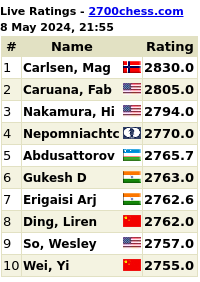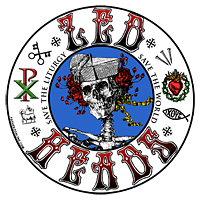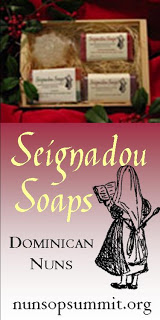From a reader:
Having entered Holy Week I’m confronted with an annual problem. What do we do with blessed Palms received on Palm Sunday, or the crosses made with them? They dry out through the week and, inevitably, pile up through subsequent house cleanings since I’m loathe to put them in the bin. What, then, is the best way to dispose of blessed Palms?
Old palms ought to be burned.
As a matter of fact the ashes used on Ash Wednesday are traditionally from the burned palms from the year before.
You can burn them yourself and if nothing else mix the ashes with water and pour them on the ground.
Hmmm… do ashes help plants?
Otherwise, perhaps your parish priest would take them and, when they burn the palms for Ash Wednesday for next year, your palms might be included.


































Yes, ashes can help plants, indirectly. Snails and slugs do not like ash, so putting ashes on the ground around a plant will discourage these pests. If the plant is especially tasty to them, as basil is, it is necessary to completely encircle the plant with a good coating of ash. Otherwise the pests will find a way through.
I plan to burn my old palms and sprinkle the ashes on the plants in front of the statue of Our Lady.
I actually keep mine in a vase. I have kept them over the past few years and just keep adding every year.
In the Philippines (or at least in our parish), the faithful are actively encouraged to bring their old palms to the church to be burned for use on Ash Wednesday.
Palm (or any other cellulose) ashes are a good source of Potassium (potash), which is typically lacking in wet climates and alluvial soils. It also neutralizes acidity, if your soil is too acid.
I took mine out to the garden and burnt them. Then I poured some water over the ashes and mixed them into the soil.
Blessed palms are a sacramental and absolutely should not be put in the trash.
The tradition in the US is to place them in view throughout the year, often placed behind a crucifix or formed into the shape of a cross and placed on a mantle or hung on the wall. Before Lent begins, parishes will collect last year’s palms to burn for Ash Wednesday. I’m surprised this isn’t the custom in the UK (I guess the original poster is in the UK from his/her use of the word “bin”) too.
If your church doesn’t collect them or if you need to get rid of them sooner, I’m sure the sacristan or parish priest will take them off your hands.
Some parishes I have been a member of use collected and burned them for Ash Wednesday, but my current parish also collects them and uses them in the new fire at the Easter Vigil.
Our parish (where I am an Associate) has a collection of palms, but I have thought a lot about how many parishes do not have active collections of blessed articles for disposal like that. When I get old enough to have my own parish, I intend to have annual collections of blessed articles that need to be disposed properly — broken rosaries, old religious images/crucifixes, old scapulars, palms, old bibles that are worn out, etc. etc. It would be good if every parish did things like this on occasion and also if the pastor educated the people about the proper care of blessed items.
I suggest bringing them to your priest, mentioning burning them for the Ash Wednesday ashes, to pull him in that direction if he isn’t there already.
Fr. BJ, you mention old bibles. What should be done with them?
In the tradition of the domestic church, one keeps them until the next Ash Wednesday and then burns them. Mix the ashes with holy water and use it to bless your garden.
Related query: What about blessed St. Joseph’s Day bread? We forgot about two loaves in the pantry that are now hard as rocks.
Can you bury them in a safe place without first burning them?
I don’t mean to hijack this, but the mention of Ash Wednesday brought to mind a question I had meant to ask. Is it permissible for the laity to distribute the ashes on Ash Wednesday?
In our parish, one of the deacons organizes a collection, in late January – early February, of the previous year’s palms, and burns them for ashes just before Ash Wednesday.
I was told to either bury them in the ground or to bring them to the Parish where they will burn them for Ash Wednesday.
I just keep my burnt palms in a large jug. I didn’t know that you could use them as fertilizer.
In a perfect world, I would collect palms from the previous year on Palm Sunday and burn them on a pleasant day in the Summer for the Ash Wednesday the following winter. Palm burning is a smoky affair and requires constant feeding in of the fronds, best done outside and preferably when the temperature is above 30. Just don’t mix he ashes with oil until about a week before Ash Wednesday, to avoid an off odor.
Is that 30F or 30C. Can be quite a difference. I am assuming you meant 30F.
Take them to your nearest Syro-Malankara Catholic parish (or Malankara Orthodox, or Syriac Orthodox) on Christmas Eve, we burn to Commemorate the birth of the True Light of the world!
It has always been our custom for as long as I can remember to put the palms behind crucifixes and pictures of the saints. The palm is a sign of triumph and is especially appropriate with a crucifix.
They are burned before Ash Wednesday.
I have my palms behind my crucifixes, and pictures of Our Lady. I also have one behind the St. Benedict Medal over my door.
As a sacramental, they ward off evil. People used to place them in barns, to protect against fire. They also planted them in fields.
Quite a difference, LOL, Matt. I did indeed mean Fahrenheit, but since I am making a perfect world, I will eschew 30C as well and go for either 70 or 21, with appropriate unit designations applied.
Ashes provide potassium but are alkaline and most plants prefer acid soils to improve iron uptake (which is frequently limiting). Adding too much ash to soil will make it infertile. So the answer depends on your soil pH.
In the year for which the palms are current I place one on each of the four sides of the house to help protect the house from evil spirits. I was instructed to do this by a very elderly Priest. Palms from the previous year have been turned in to a local church where they are burned and used for Ash Wednesday.
In the year for which the palms are current i place one on each of the four sides of the house to help protect against evil spirits. Instructed to do this by an elderly Priest. The previous year palms are given to a local church for burning and use on Ash Wednesday.
I always write a note in my calendar to bring old palm into church the Sunday before Ash Wednesday. If you want to do the same, Ash Wednesday 2010 is on 17 February, so write yourself a reminder for Saint Valentine’s Day (14 Feb.) next year.
My grandmother would snip of small pieces of them throughout the year and burn them in her votive candles whenever her children were sick.
I was discussing this with friends in Paris yesterday when we were comparing the different traditions. One told me that she had always buried her ‘buis benit’ (box sprigs which are used there instead of palms) in the garden without burning them. However this year when she was doing it a neighbours cat kept on digging it back up!
I have never been in a parish where we were asked to bring in the old palms from the previous year. I tend to keep them in a jug after a year tucked behind a Picture of Our Lady of Perpetual Succour meaning to burn them one day but never seem to get round to it.
In my parish mever make a collect of old palms, because in this part of the world, find a palm is very common. At home, i take the old ones, burn then and buried on the ground. One of the most curious traditions here is to use the palm and fold them to make a cross and put them in the doors as a protection against evil.
Why not ask your parish if they can be burned in the Easter Vigil fire? Often, other blessed items are burned at that time, including sometimes the previous year’s Paschal Candle.
Of your charity folks, save them for your Parish Priest for burning next Ash Wednesday – it’s always a worry to find enough Palms!
This is really instructional! In Ireland it’s common to use bits of fir branch (or has been as far back as I can remember) and we always keep them behind pictures, crucifixes etc. However in our house we’ve just kept them there until they’re totally withered and brown – falling to pieces in fact – usually some time around June/July and then we’ve just thrown them out. I will certainly NEVER do this again and will burn them or dispose of them appropriately.